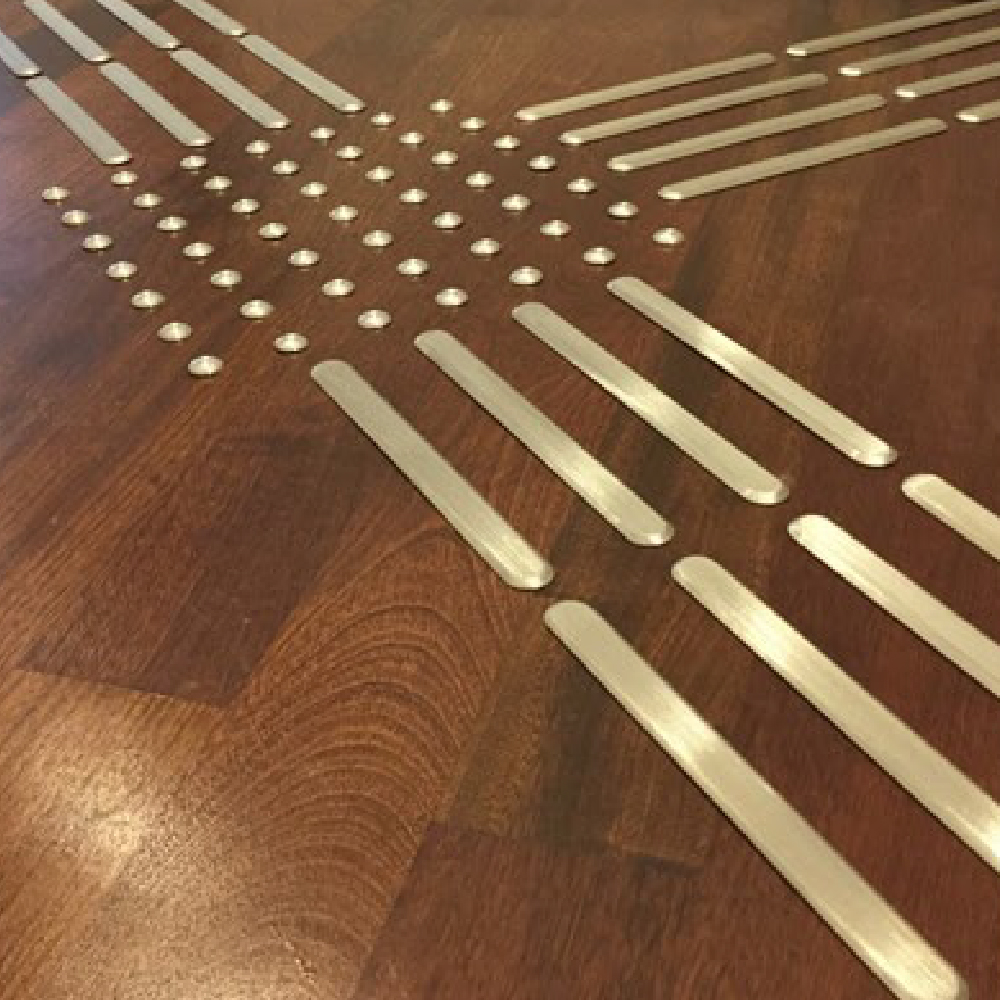









As Canada continues to move towards a fully inclusive society, accessibility and universal design remain at the forefront for developers, contractors, and other built environment professionals. Laws and codes like the Accessibility for Ontarians with Disabilities Act (AODA) ensure that public and private spaces consider the needs of citizens with disabilities. However, true accessibility goes beyond legal compliance - it means thoughtfully designing spaces with Tactile Walking Surface Indicators where everyone can navigate, orient, and perceive information independently and with equal dignity.
Tactile wayfinding tiles are an integral element in creating navigable zones for individuals with low or no vision. Comprised of linear bars or truncated dome patterns embedded into flooring, these tactilely detectable tiles give directional cues and hazard warnings through distinct textures detectable underfoot or by a long white cane. While codes mandate their presence along accessible routes, proactive deployment of wayfinding tiles throughout facilities enhances usability for all users - not just those with vision impairments.
This blog explores the evolving need for compliant wayfinding tiles in Canada as we progress toward 2025 and beyond. It examines applicable accessibility standards, optimal applications, considerations in product selection, early design integration best practices, and more. Let's begin our exploration.
Effective wayfinding through compliant floor guidance systems benefits all by enabling:
Independence through intuitive orientation
Dignity via autonomy versus reliance on sighted assistance
Safety via hazard detection
Participation by empowering access to key community amenities
Inclusion of disabled citizens within mainstream experiences
Beyond compliance, proactive wayfinding makes public infrastructure welcoming through universal usability. It forms the cornerstone of accessibility, facilitating independent living, learning, and labor force participation.
Across Canada, accessibility regulations reference standards from the Canadian Standards Association (CSA) regarding dimensions, arrangement, materials, and other specifications for tactile walking surface indicators (TWSI), which include both warning and guidance tiles.
Key requirements include the Accessibility for Ontarians with Disabilities Act (AODA), which mandates the integration of TWSI along accessible routes. The National Building Code of Canada references CSA B651 to address wayfinding needs. Provincial building codes like Ontario's complement national mandates.
Municipalities also maintain bylaws - for example, Toronto outlines placement protocols along sidewalks and curb ramps. Understanding evolving codes is crucial, as non-compliance carries heavy penalties. With 2025 looming, proactive upgrades ensure preparedness.
Originally intended primarily for hazards, guidance tiles now delineate complete pathways within multifaceted groundscapes. Their presence guides seamless navigation between key decision points, minimizing disorientation.
As environments grow more intricate, wayfinding tactile indicators deployment should mirror complexity through logical, comprehensive layouts. Beyond basic compliance, consider enhancements like:
Transit hubs: Connect complex stations intuitively
Office buildings: Link lobby, stairs, and amenities effortlessly
Shopping districts: Foster easier mall navigation
University campuses: Simplify travels between classes
Parks & trails, Arenas & Stadiums: Delineate routes clearly for risk-free enjoyment
Proactive placement creates an accessible experience on par with sighted users. Rethink spaces holistically to serve all.
Wayfinding tiles must withstand relentless foot traffic yet provide long-term performance. Consider the setting, traffic intensity, material durability as well as:
Porcelain withstands demanding conditions efficiently
Metal resists impacts better than polymers or concrete
Replaceable systems simplify upkeep, future changes
Surface-applied options facilitate renovations cost-effectively
Slip-resistance and color contrast aid partial sighted users
Compliance with AODA, CSA B651 is non-negotiable
Consult experts on optimal selection aligned with project needs, minimizing total cost of ownership. Integrate feedback from guide dog users and advocacy groups to gain user-centered solutions.
Proactive wayfinding inclusion ensures accessibility from project genesis. Consider:
Discuss requirements in the schematic design phase
Refine floorplan layouts accounting for tile placement
Develop phased mockups testing usability iteratively
Incorporate input from end-users and experts
Create 3D renderings verifying code-compliant flows
Budget for complete tactile flooring needs from the start
Get approvals citing holistic, inclusive designs rapidly
This "design for all" mindset fosters universal experiences benefitting citizens of varying abilities equally. True inclusion is accessible from conception.
As visible minorities grow and an aging population emerges nationwide, fostering independent mobility assumes heightened urgency. While compliance focuses on basic accessibility, proactive measures promote dignity through intuitive wayfinding floor tactile, aiding in independent navigation for all.
Canada's goal of barrier-free communities by 2040 relies on the responsible and insightful integration of inclusive elements like compliant wayfinding tiles optimized through early design considerations and product selection catering to diverse needs. By keeping codes, standards, and user experience at the forefront, the built environment can progressively actualize universal access for a society of varied constituents.
Let Tactile Solution Canada be your trusted accessibility advisory partner. With in-depth expertise in products, codes, and inclusive design best practices, we aid in the seamless inclusion of optimized media-finding systems into your next project. Contact us to explore holistic, user-centered solutions for a future where true access is more than legislation - it's a lived reality.
Any public, multi-story, or complex facility mandates compliant tactile wayfinding per accessibility codes.
Hazardindicatortiles alert users to upcoming risks while guidance paths improve spatial orientation.
Footfall, weather resistance, substrate, lifespan, noise control, aesthetics, material, and budget considerations.
Yes, new projects can specify ideal bespoke tile layouts, while retrofits must integrate within confines.
Convenient, intuitive circulation routes and hazard warnings promote confidence, participation, and autonomy.
